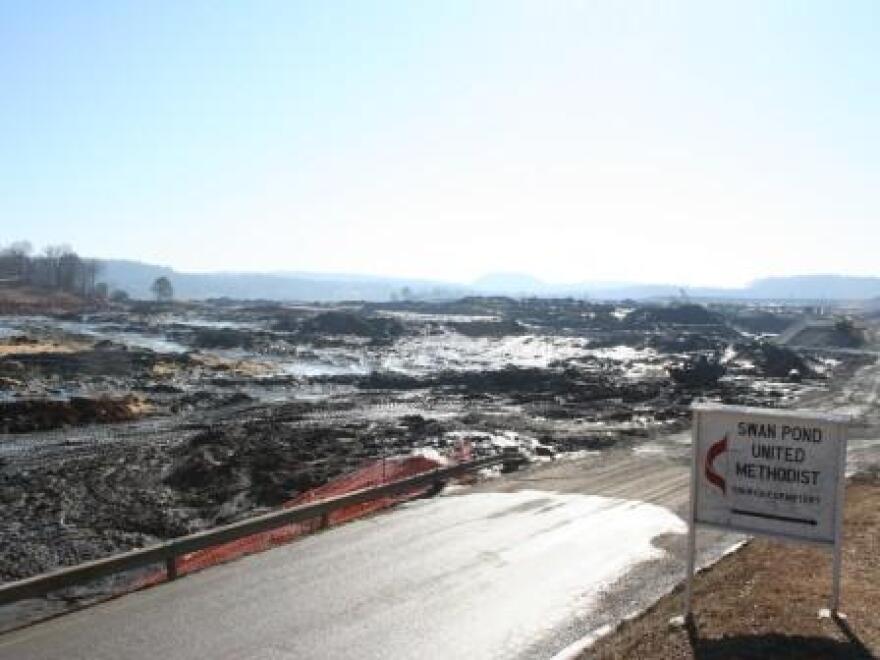It was one of the darkest moments in the Tennessee Valley Authority’s long history.
Residents of the Swan Pond community living near the TVA’s Kingston Fossil Plant awoke early on the morning of December 22, 2008 to a sea of gray sludge barreling its way through the community. More than a billion gallons of coal ash being stored in a nearby pond had broken through a retaining wall and blanketed more than 300 acres around the plant, destroying homes, killing fish and filling local waterways with a thick muck laden with toxic materials.
As the five-year anniversary approaches, you won’t find the TVA commemorating the event. “We are focusing more on looking ahead than we are in looking back,” TVA spokesman Scott Brooks tells WUOT News.
The disaster forced the utility to take a good look at a lot of its processes, including the ones used to store coal ash. Coal ash (or "fly ash") is the residue left over when coal is burned to create electricity. “I’d hate to think that anything like (the Kingston spill) would have to happen for people to make a change,” says Brooks, “but it certainly was a catalyst for us taking a look at the way we do business and the way we store our ash and our other residual products.”
Prior to the spill, coal ash at the Kingston plant was soaked with water to keep it from becoming airborne. That wet ash was stored in huge retaining ponds, but the resulting sludge was extremely heavy and may have contributed to the collapse of the dike wall. Storage at all of the TVA’s coal-burning plants is now being converted to a dry process, much like a landfill. Kingston was the first plant to be converted. Brooks says it may take another ten years for all of the TVA plants to make the switch.
“We’ve taken the lessons that we’ve learned and are focused on completion (of the clean-up)”, says Brooks. He estimates the clean-up and restoration of the community and waterways surrounding the plant is approximately 85% complete. “It’s certainly on its way to being a place the community can be proud of again.”



